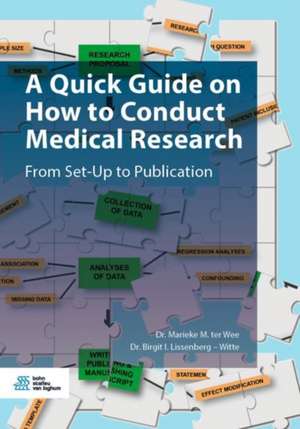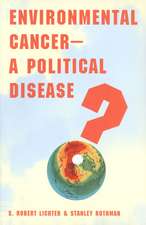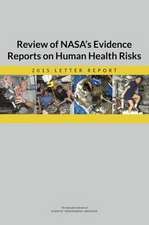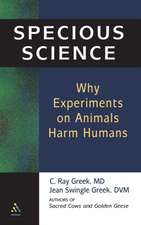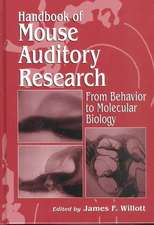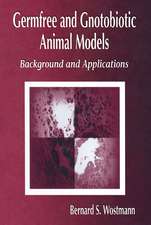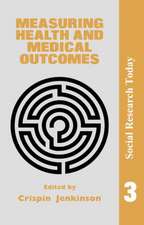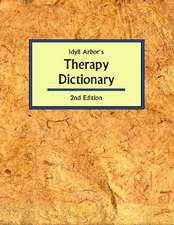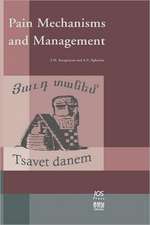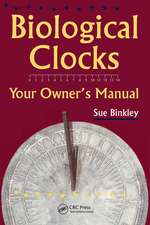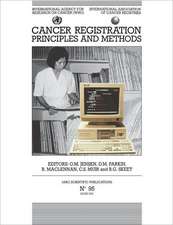A Quick Guide on How to Conduct Medical Research: From Set-Up to Publication
Autor Marieke M. ter Wee, Birgit I. Lissenberg-Witteen Limba Engleză Paperback – 5 mar 2019
A Quick Guide on How to Conduct Medical Research is not only an indispensable resource for PhD students, researchers as well as physicians performing their own research, but also for any readers of medical research who would like a deeper understanding of scientific publications. It can also be used in educational programs in the school of medicine, health sciences, human movement sciences, medical biology and paramedical schools.
Preț: 393.39 lei
Preț vechi: 414.10 lei
-5% Nou
Puncte Express: 590
Preț estimativ în valută:
75.28€ • 80.50$ • 62.76£
75.28€ • 80.50$ • 62.76£
Carte tipărită la comandă
Livrare economică 17 aprilie-01 mai
Preluare comenzi: 021 569.72.76
Specificații
ISBN-13: 9789036822473
ISBN-10: 9036822475
Pagini: 249
Ilustrații: XVI, 290 p. 46 illus., 21 illus. in color.
Dimensiuni: 168 x 240 x 22 mm
Greutate: 0.49 kg
Ediția:1st ed. 2019
Editura: BOHN STAFLEU VAN LOGHUM
Colecția Bohn Stafleu van Loghum
Locul publicării:Houten, Netherlands
ISBN-10: 9036822475
Pagini: 249
Ilustrații: XVI, 290 p. 46 illus., 21 illus. in color.
Dimensiuni: 168 x 240 x 22 mm
Greutate: 0.49 kg
Ediția:1st ed. 2019
Editura: BOHN STAFLEU VAN LOGHUM
Colecția Bohn Stafleu van Loghum
Locul publicării:Houten, Netherlands
Cuprins
1 The start - steps to set-up a research.- 2 Medical statistics - the basics.- 3 Analyzing continuous outcome variables.- 4 Analyzing dichotomous outcome variables.- 5 Analyzing time to event outcome variables.- 6 Varables influencing the association.- 7 To predict or not to predict.- 8 Missing data.- 9 Writing and cirically appraising a scientific paper.
Notă biografică
Marieke M. ter Wee studied Occupational Therapy (BSc) at the Hogeschool van Amsterdam, Health Sciences (MSc) at the VU University of Amsterdam, Epidemiology (postgraduate, MSc) at the VU University Medical Center, and obtained her PhD in Medicine at the VU University Amsterdam. She has worked as a clinical research associate at Quintiles Transnational, and since October 2015 she works as an education coordinator and science lector at the Department of Epidemiology and Biostatistics of the VU University Medical Center in Amsterdam (as of June 2018: Amsterdam UMC, location VUmc). She helps coordinate and teaches in several courses on methodology and statistics at the school of Medicine. Since May 2017, she also works as a senior researchers at the Department of Rheumatology of the VU University Medical Center. Here research focusses on the impact of inflammatory arthritis on work participation as well as on other patient reported outcomes (PROs).
Birgit I. Lissenberg-Witte studied Mathematics (MSc) at the VU University Amsterdam, and obtained her PhD in Mathematical Statistics at the Delft University of Technology. Since November 2010, she works as a scientific researcher at the Department of Epidemiology and Biostatistics of the VU University Medical Center in Amsterdam (as of June 2018: Amsterdam UMC, location VUmc). Her research focusses on developing new methodology in health science. Besides, she coordinates the requests of medical researchers for statistical help through the statistical helpdesk. Moreover, she works as a statistical consultant with junior and senior medical researchers and physicians, teaches a course on Biostatistics for research master students in the area of cardiovascular diseases and oncology, and is member of the Medical Ethical Review Board of Amsterdam UMC, location VUmc.
Birgit I. Lissenberg-Witte studied Mathematics (MSc) at the VU University Amsterdam, and obtained her PhD in Mathematical Statistics at the Delft University of Technology. Since November 2010, she works as a scientific researcher at the Department of Epidemiology and Biostatistics of the VU University Medical Center in Amsterdam (as of June 2018: Amsterdam UMC, location VUmc). Her research focusses on developing new methodology in health science. Besides, she coordinates the requests of medical researchers for statistical help through the statistical helpdesk. Moreover, she works as a statistical consultant with junior and senior medical researchers and physicians, teaches a course on Biostatistics for research master students in the area of cardiovascular diseases and oncology, and is member of the Medical Ethical Review Board of Amsterdam UMC, location VUmc.
Textul de pe ultima copertă
This book is an essential guide on how to conduct human medical research with a focus on the fundamental concepts of contemporary biostatistics and epidemiology. It provides an overview of all necessary steps: from setting up research, analyzing collected data and publishing results as a scientific paper and also in finding the appropriate audience for a completed study. This comprehensive but compact book covers the writing of research proposals, choosing research designs, describing collected data, and understanding various techniques of inferential statistics. It is written from an applied point-of-view: two studies are used as example, which guide the reader through all steps, focusing on the interpretation of the results using SPSS (Statistical Package for the Social Sciences) output.
A Quick Guide on How to Conduct Medical Research is not only an indispensable resource for PhD students, researchers as well as physicians performing their own research, but also for any readers of medical research who would like a deeper understanding of scientific publications. It can also be used in educational programs in the school of medicine, health sciences, human movement sciences, medical biology and paramedical schools.
A Quick Guide on How to Conduct Medical Research is not only an indispensable resource for PhD students, researchers as well as physicians performing their own research, but also for any readers of medical research who would like a deeper understanding of scientific publications. It can also be used in educational programs in the school of medicine, health sciences, human movement sciences, medical biology and paramedical schools.
Caracteristici
Guide to conduct human medical research: from set-up to publication
Describes various statistical concepts and methods
Uses examples from real patient data
Shows how to deal with confounding, effect modification and missing data
Describes various statistical concepts and methods
Uses examples from real patient data
Shows how to deal with confounding, effect modification and missing data
